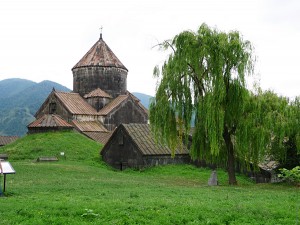Ancient Armenia
The first country to embrace Christianity as their official religion in 301, this mountainous country nestled in the Caucasus mountains has fought for independence through successive waves of invasion: Assyrians, Greeks, Romans, Byzantines, Arabs, Mongols, Persians, Turks and Russians. It has now been independent since the breakup of the Soviet Union in 1991.
The 20th Century was particularly difficult, with over 1 million Armenians killed by the Turks during WWI as the Ottomans battled the Russians. Most refer to this as the Armenian Genocide, with deliberate civilian massacres and deportations, although this is a highly sensitive issue with Turkey, which vehemently denies genocidal intent.
Regardless of intent, the toll on the Armenian population was massive and led to a worldwide diaspora of Armenian refugees. Of the 8 million Armenians in the world today, only 3 million live in present-day Armenia, with the rest spread worldwide (Russia and the United States with the largest shares, followed by Armenian populations of over half a million in Iran, France, Georgia and Syria).
Even Armenia’s recent history and transition to independence hasn’t been easy. The magnitude 7.2 Spitak earthquake in 1988 killed over 25,000 and prompted then Soviet Union leader Gorbachev to formally ask the United States for humanitarian help, the first time this had occurred since WWII. And from 1988 to 1994 Armenia fought a bitter war against neighbor Azerbaijan over the (predominantly Armenian) breakaway Azeri province of Nagorno-Karabakh.
Despite its difficult past, Armenia like many former Soviet Republics is a country with a hopeful future, and has expressed interest in applying for membership into the European Union in the coming years (the Caucasus mountains traditionally represent the southeast border of Europe with Asia).

 Click to subscribe via RSS feed
Click to subscribe via RSS feed
